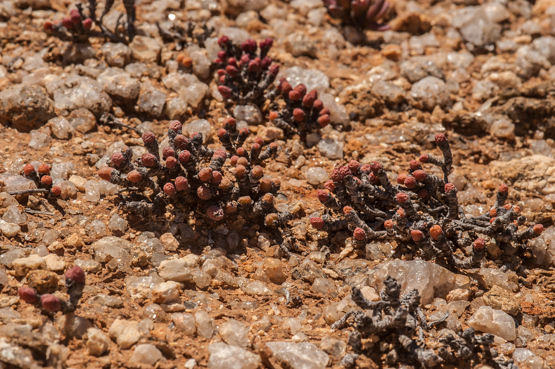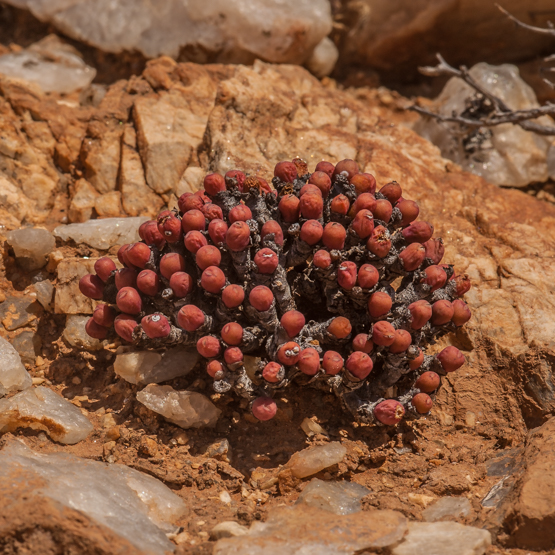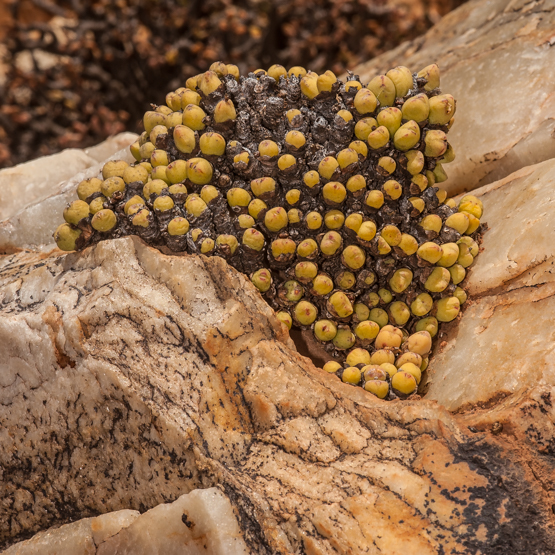When a species has many synoniems (16 in this case), one cannot help but wonder what that means. There may be a couple of reasons for the plethora of names, but in this case the most likely one is the species being so highly variable. Understandably, this makes it often difficult to positively identify it. The situation is further complicated by the fact that the species often grows together with C. bilobum and hybridizes with it, resulting in swarms of plants with intermediate characters.
The plants form small or large cushions (up to 30 cm in diameter), which may be straggly or neatly domed.
The bodies are up to 2.5 cm long and 1.5 cm in diameter, heart-shaped to nearly spherical, usually slightly bilobed and sometimes slightly keeled. The keel lines are often red, the fissure zone has small, windowed patches on either side and the skin is pale green to yellowish green or greyish green, smooth or velvety-papillate and often spotted.
As a rule the flowers are yellow (rarely pure white), with petals often drooping. They appear in March -June.
The plants occur mostly in the western Richtersveld on granite, gneiss, sandstone or quartz slopes -often in shade.
All 3 pictures taken 6 Oct. 2011.



